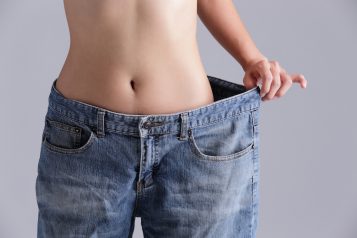The 7 Pillars Of Health According To The American Heart Association + Dr. Amin Javid’s Advice For Healthy Living
The American Heart Association’s 2020 Impact Goal of improving the cardiovascular health of all Americans 20 percent while reducing deaths from cardiovascular diseases and stroke by 20 percent underscores the organization’s focus on prevention. Using the best available evidence, AHA developed a prescription for health called Life’s Simple 7 – the seven most important predictors of heart health and also a pathway for achieving ideal cardiovascular health. Haute Beauty caught up with Dr. Amin Javid, a Board-Certified chiropractic physician and one of the industry’s most sought after medical illustrators. With a mission to utilize his acquired skills to benefit patients through cutting-edge technology, Dr. Javid strives to make a difference in the lives of those who suffer from chronic and debilitating diseases. Here, the highly-renowned doctor shares his insight on how individuals can maintain a healthier lifestyle and more on the seven pillars of health.

Smoking
Let’s face it, most cigarette smokers have heard time and again from loved ones and friends that they need to stop smoking. This is not another plea to stop but rather a new insight that may very well inspire a smoker to quit….and live a happier life. There is vast, irrefutable evidence out there on the detrimental effects of smoking as it relates to your heart health. BUT, the latest research shows a direct correlation between cigarette smoking and back pain (low back pain in particular). When one looks at the fact that cigarette smoking occludes (clogs) arteries, it becomes logical to realize that even the small vessels that supply blood to the spinal stabilizing muscles are also affected and consequently unable to deliver the needed blood supply muscles…leading to pain and fatigue. I have concluded that a cigarette is the only drug that, with prolonged use, will affect every system of the human body. A startling notion that cannot be said of other “illegal” drugs. Quit – not because others demand you to, rather quit because you value life, your children, parents and most importantly, yourself.
Nutrition
You are what you eat….right? Not necessarily but we get the point. Considering that the heart is (among) our most vital organs, the flow of blood through our bodies becomes our lifeline. There is a flood of nutritional information out there; from the ever-popular “Keto Diet” to the resurfacing “HCG, or human chorionic gonadotropin diet”. Rather than commenting on the potential benefits and risk factors of each (and yes there are risk factors to most diets), I will leave you with the words of a neurosurgeon whom I admire greatly; “if it has more than three ingredients on the label, it is likely not something you want festering in your body.” It makes sense.
Be active (a.k.a. Exercise)
Movement is life. Period. After having intimately dissected the human body numerous times, the most striking component in my mind is the thousands of mind-blowing parts that all function synchronously in order to achieve one action – movement. The nervous system (your brain) is vastly more intelligent than even the computer you are looking at now. It is waiting and ready to send and receive millions of messages from your feet and legs to accommodate any movement you chose. Exercise does not necessarily mean putting on your Lululemons and going to a gym where the majority of people are grunting and improperly using weights. How about this – just walk! Did you know that walking alone can be considered a full-body exercise? We all know that walking is good for the heart but few people know the “why”. Aside from the physics pertaining to the gross movement of the extremities, there is a rather simple “pump mechanism” intrinsic to walking. The gait cycle (walking) largely consists of six phases, yet it is one particular phase that mostly pertains to the heart and blood flow. The “Toe-Off” part of the gait cycle, the part where the rear foot is just about to push off the ground involves contraction of the “calves” (soleus, gastrocnemius muscles). Buried between these muscles is an artery, like a hose, that is compressed with each step, forcing blood to move up back towards the heart (via the aorta). This all happens without us even thinking about it – one tiny piece of the world’s most complex machine we call our body. In addition, going for a nice walk with a family member or loved one is a phenomenal way to connect, undisturbed by the distractions of daily work life.
Lose weight – reduce compression to your organs and joints
Only five pounds of fat in the human body is nearly the size of a regulation size football. Obesity surpasses what is visible to the eye; rather it also suffocates and impedes normal heart function (as well as other organs such as the liver). In addition, obesity is one of the most common culprits of what I call the “Dark Circle”. Obesity causes joint pain– joint pain causes immobility– immobility causes weight gain….contributing to the initiating factor that sets off this catastrophe. Breach the circle and live again!
Manage blood pressure
Control Cholesterol
Our society is comprised of “Sickcare”, not “Healthcare”. We go to the hospital not because we are healthy but rather the opposite. Wellness and preventative care is the key to longevity. Avoid the issue before it occurs rather than fighting the problem after the fact. Organizations such as the American Heart Association and Haute Living provide a wealth of information and assistance to those who seek it. I, personally, believe in the spirit and resolve of every human being and will assist anyone who makes the effort to become a healthier individual.
“An estimated 20 percent to 30 percent of companies’ annual healthcare costs are spent on employees with 10 modifiable risk factors, seven of which make up Life’s Simple 7.”
“Very few American adults have ideal cardiovascular health, perhaps as few as one percent of the population. In fact, only 18 percent of adults have five or more metrics with ideal levels, with lower prevalence among men (11%) compared to women (25%).


























